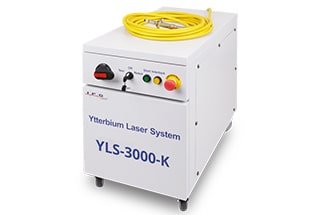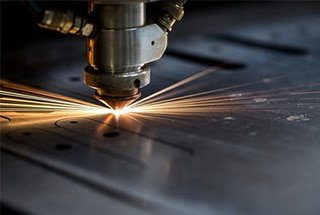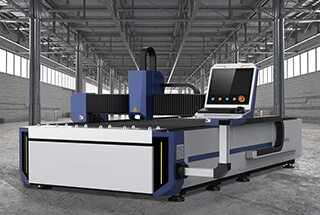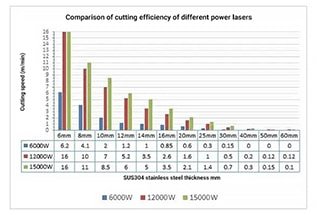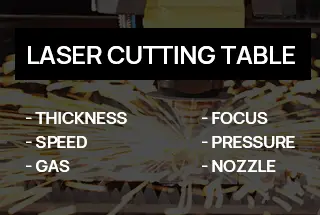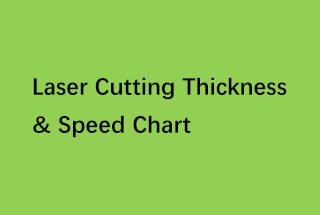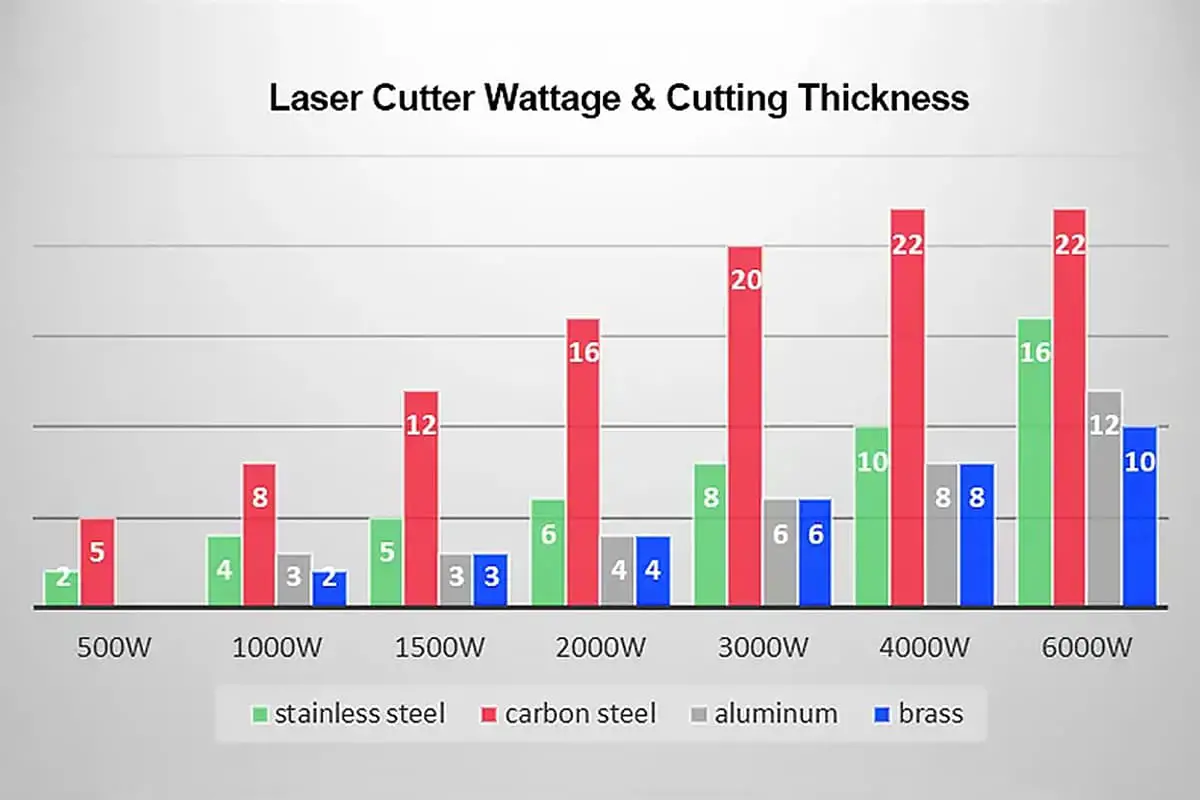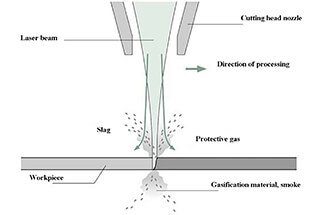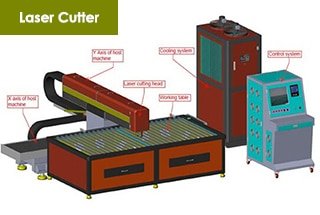
Have you ever struggled to achieve the perfect cut on metal? In this blog post, we’ll uncover the secrets to optimal cutting parameters for various metals using a 3000W fiber laser. Learn how to enhance your cutting efficiency and achieve flawless results every time!
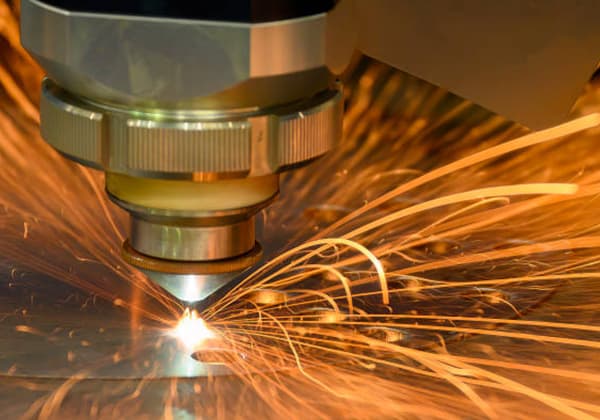
Welcome to our comprehensive guide on cutting various metals with different gases and settings for 3000W fiber laser cutting machines!
In this blog post, we’ll delve into the optimal cutting parameters for stainless steel, carbon steel, aluminum alloy, and brass using nitrogen (N₂), compressed air, and oxygen (O₂) as assist gases. Our focus is on maximizing cutting efficiency while maintaining superior edge quality across a range of material thicknesses.
We aim to equip you with the knowledge to achieve precision cuts, whether you’re seeking mirror-like edge finishes or specific surface characteristics tailored to your application. By fine-tuning your cutting parameters, you can optimize both cut quality and production throughput.
We’ll provide you with a detailed breakdown of critical variables, including:
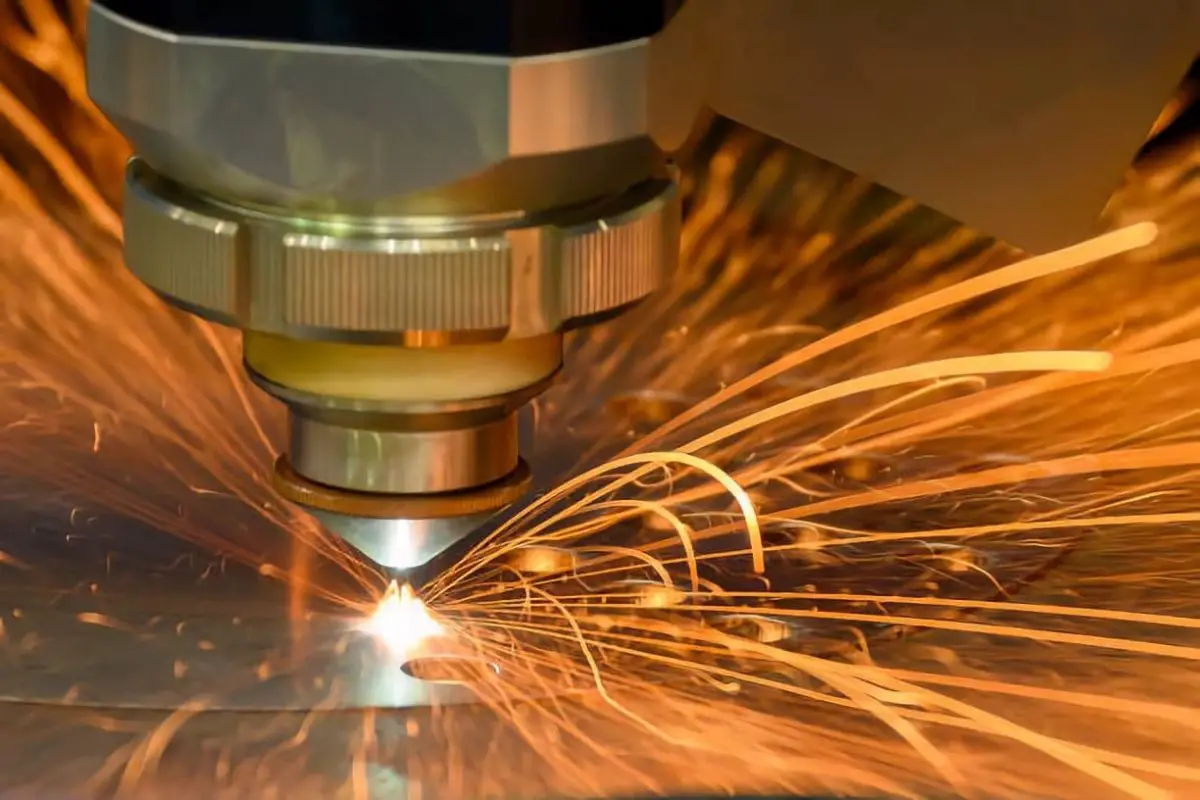
| Material | Thickness (mm) | Gas | Air pressure (BAR) | Speed (m/min) (100 * 150 focal length) | Speed (m/min) (100 * 190 focal length) | Effect |
| stainless steel | 1 | nitrogen | 12 | 35-45 | 12.0-20.0 | smooth |
| 2 | 14 | 14-16 | 8-12 | smooth | ||
| 3 | 16 | 8-9 | 8-9 | smooth | ||
| 4 | 16 | 4-5 | 4-5 | smooth | ||
| 5 | 18 | 2.5-3.3 | 2.5-3.3 | Scraping hand | ||
| 6 | 20 | 1.6-2.1 | 1.6-2.1 | Scraping hand | ||
| 8 | 20 | 0.9-1.2 | 0.9-1.2 | Scraping hand | ||
| 10 | 20 | 0.6-0.8 | 0.6-0.8 | There are some burrs |
| Material | Thickness (mm) | Gas | Air pressure (BAR) | Speed (m/min) (100 * 150 focal length) | Speed (m/min) (100 * 190 focal length) | Effect |
| Stainless steel | 1 | air | 20 | 38-48 | 14-22 | smooth |
| 2 | 20 | 15-17 | 9-13 | smooth | ||
| 3 | 20 | 9-10 | 9-10 | smooth | ||
| 4 | 20 | 5-6 | 5-6 | smooth | ||
| 5 | 20 | 3-4 | 3-4 | Scraping hand | ||
| 6 | 20 | 2-2.5 | 2-2.5 | Scraping hand | ||
| 8 | 20 | 1-1.5 | 1-1.5 | Scraping hand | ||
| 10 | 20 | 0.7-0.9 | 0.7-0.9 | There are some burrs |
| Material | Thickness (mm) | Gas | Air pressure (BAR) | Speed (m/min) (100 * 125 focal length) | Speed (m/min) (100 * 150 focal length) | Effect |
| Carbon steel | 1 | 1 | 10-16 | 10-16 | Bright surface | |
| 2 | 1 | 5.0-8.0 | 5.0-8.0 | Bright surface | ||
| 3 | 0.85 | 4-4.5 | 4-4.5 | Bright surface | ||
| 5 | 0.75 | 3-3.5 | 3-3.5 | Bright surface | ||
| 6 | 0.75 | 1.8-2.2 | 1.8-2.2 | Bright surface | ||
| 8 | 0.7 | 1.8-2.2 | 1.8-2.2 | Bright surface | ||
| 10 | 0.7 | 1.1-1.3 | 1.1-1.3 | Semi bright surface | ||
| 12 | 0.7 | 0.8-1 | 0.8-1 | frosting | ||
| 14 | 0.7 | 0.6-0.8 | 0.6-0.8 | frosting | ||
| 16 | 0.7 | 0.5-0.8 | 0.5-0.8 | frosting | ||
| 18 | 0.7 | 0.5-0.7 | 0.5-0.7 | frosting | ||
| 20 | 0.7 | 0.4-0.6 | 0.4-0.6 | frosting | ||
| 22 | 0.7 | 0.3-0.5 | 0.3-0.5 | frosting |
| Material | Thickness (mm) | Gas | Air pressure (BAR) | Speed (m/min) (100 * 125 focal length) | Speed (m/min) (100 * 150 focal length) | Effect |
| aluminum alloy | 1 | nitrogen | 12 | 30-35 | 12.0-20.0 | Soft bristle prickle |
| 2 | 14 | 12-14 | 8-12 | Soft bristle prickle | ||
| 3 | 14 | 7-7.5 | 7-7.5 | Soft bristle prickle | ||
| 4 | 14 | 5-6.5 | 5-6.5 | Soft bristle prickle | ||
| 5 | 18 | 3-3.5 | 3-3.5 | Soft bristle prickle | ||
| 6 | 20 | 18-2 | 1.8-2 | Soft bristle prickle | ||
| 8 | 20 | 0.9-1 | 0.9-1 | Soft bristle prickle |
| Material | Thickness (mm) | Gas | Air pressure (BAR) | Speed (m/min) (100 * 125 focal length) | Speed (m/min) (100 * 150 focal length) | Effect |
| aluminium alloy | 1 | air | 20 | 30-35 | 12.0-20.0 | Soft bristle prickle |
| 2 | 20 | 12-14 | 8-12 | Soft bristle prickle | ||
| 3 | 20 | 7-7.5 | 7-7.5 | Soft bristle prickle | ||
| 4 | 20 | 5-6.5 | Soft bristle prickle | |||
| 5 | 20 | 3-3.5 | 3-3.5 | Soft bristle prickle | ||
| 6 | 20 | 1.8-2 | 1.8-2 | Soft bristle prickle | ||
| 8 | 20 | 0.9-1 | 0.9-1 | Soft bristle prickle |
| Material | Thickness (mm) | Gas | Air pressure (BAR) | Speed (m/min) (100 * 125 focal length) | Speed (m/min) (100 * 150 focal length) | effect |
| brass | 1 | nitrogen | 12 | 20-30 | 20-30 | smooth |
| 2 | 12 | 10-14.5 | 10-14.5 | smooth | ||
| 3 | 14 | 6.2-7 | 6.2-7 | smooth | ||
| 4 | 16 | 3-4.5 | 3-4.5 | Scraping hand | ||
| 5 | 18 | 2-2.8 | 2-2.8 | Scraping hand | ||
| 6 | 20 | 1.2-1.5 | 1.2-1.5 | Scraping hand |
In conclusion, mastering the optimal cutting parameters for each metal-gas combination is paramount for achieving superior results in metal fabrication. This comprehensive understanding forms the cornerstone of efficient and high-quality metal cutting operations.
This guide has provided you with in-depth insights and practical recommendations on cutting stainless steel, carbon steel, aluminum alloy, and brass using nitrogen, air, and oxygen as assist gases. By leveraging these industry-proven settings and techniques, you can significantly enhance your cutting efficiency, minimize material waste, and consistently achieve precise, high-quality surface finishes.
As you apply these guidelines in your future cutting projects, remember that continuous improvement and adaptation are key. The field of metal fabrication is dynamic, with ongoing advancements in cutting technologies and materials. Stay informed about the latest developments, and don’t hesitate to fine-tune these parameters based on your specific equipment and project requirements.
By referencing this guide and combining it with your hands-on experience, you’ll be well-equipped to tackle a wide range of cutting challenges, ultimately leading to enhanced productivity, improved part quality, and increased competitiveness in the metal fabrication industry.

